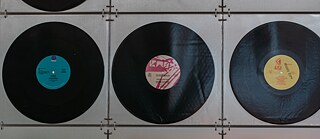Techno Worlds: The idea
About the Exhibition Techno Worlds
As a global phenomenon, techno has not only shaped music history, but has also set impulses that have impacted contemporary culture, art, pop culture, media consumption and technologies. Techno is music, but also far more than music, finding its echoes in design and fashion, philosophy, subculture, in people's relationship to machines, to the virtual, in political-emancipatory projects and in the ruins and fissures in hegemonic norms Techno as a sense of life and time that transcends borders reflects the respective social, living space and economic structures it finds itself in, and can equally well be used as a political tool.
Starting in Detroit, techno has been developing and spreading rapidly worldwide since the 1980s. What was still a comparatively "manageable" world changed radically with digitality and the political upheaval of 1989/90. In Germany, after the fall of the Berlin Wall, techno was seen as a unifying element between East and West. Berlin in particular, which attracted attention in the 1990s with the Love Parade and techno clubs that became legendary, rose to become one of the most important techno metropolises.
Techno and club culture have engendered different eras, styles and variants and are constantly reinventing themselves. TECHNO WORLDS references diverse techno scenes, genres and subcultural-political projects at different times and in different places around the world and features a selection of these phenomena as narrated and represented in works by visual artists and musicians.
Exhibition and Artists:
TECHNO WORLDS includes photo, video and installation works by Aleksandra Domanović, Carsten Nicolai, Chicks on Speed, Daniel Pflumm, Henrike Naumann & Bastian Hagedorn, Jacqueline Caux, Jeremy Shaw, Kerstin Greiner, Robert Lippok, M+M, Vinca Petersen, Ryōji Ikeda, The Otolith Group, Tobias Zielony, Tony Cokes, Rangoato Hlasane, Sarah Schönfeld, Zuzanna Czebatul, DeForrest Brown, Jr., AbuQadim Haqq, Dominique White, Maryam Jafri and Mamba Negra.TECHNO WORLDS is an exhibition organised by the Goethe-Institut that will be shown in museums and other exhibition venues worldwide until 2026.
Curators:
Mathilde Weh (Goethe-Institut, e.V.)Justin Hoffmann (Kunstverein Wolfsburg)
Creamcake (a Berlin collective)
